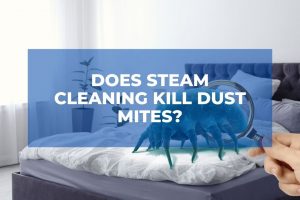Maintaining a clean oven is essential for every home cook or professional chef. Over time, ovens accumulate grease, food spills, and stubborn stains, which can affect cooking performance and even lead to unpleasant odors. To address this issue, two popular cleaning methods have emerged: oven steam cleaning and pyrolytic cleaning.
In this article, we will compare these two techniques, highlighting their differences, benefits, and drawbacks, to help you choose the most suitable option for your needs.
Quick Navigation
1. What is Oven Steam Cleaning?
Oven steam cleaning is a natural and environmentally friendly method to remove grime and stains from your oven. It involves using steam to loosen dirt and grease, making it easier to wipe away. This method is particularly suitable for regular maintenance and light to moderate cleaning tasks.
2. How Does Oven Steam Cleaning Work?
In oven steam cleaning, you start by pouring water into a reservoir in the oven. The oven is then heated to a specific temperature, causing the water to turn into steam. The steam circulates within the oven, softening the grime and loosening the food residues. Once the oven cools down, you can simply wipe away the softened dirt with a damp cloth or sponge.
3. Advantages of Oven Steam Cleaning
Environmentally Friendly:
Oven steam cleaning doesn’t involve the use of harsh chemicals, making it a safer and greener cleaning method.
Easy and Quick:
Steam cleaning requires minimal effort and time, as the steam does most of the work for you. It is perfect for regular maintenance and light cleaning tasks.
Versatile:
Oven steam cleaning is suitable for various oven types, including traditional ovens, convection ovens, and self-cleaning ovens.
Safe:
Steam cleaning eliminates the need for chemical cleaners, reducing the risk of harmful fumes or residues contaminating your food.
4. Disadvantages of Oven Steam Cleaning
Limited Effectiveness For Heavy-duty Cleaning:
While oven steam cleaning is effective for regular maintenance, it may not be sufficient for heavy-duty cleaning tasks or tackling burnt-on food deposits.
Requires Manual Wiping:
After steam cleaning, you need to manually wipe away the softened dirt, which may require some physical effort.
5. What is Pyrolytic Cleaning?
Pyrolytic cleaning is a self-cleaning function available in some modern ovens. It uses high temperatures to break down and carbonize food residues, turning them into ash. This method is designed for deep cleaning and removing tough stains and grease.
6. How Does Pyrolytic Cleaning Work?
When you activate the pyrolytic cleaning function on your oven, it heats up to extremely high temperatures (around 500°C or 932°F). At this temperature, any organic matter inside the oven cavity is reduced to ash. After the cleaning cycle is complete, you can simply wipe away the remaining ash with a damp cloth.
7. Advantages of Pyrolytic Cleaning
Deep Cleaning Power:
Pyrolytic cleaning eliminates even the toughest stains, burnt-on food residues, and grease, making it ideal for heavy-duty cleaning tasks.
Self-cleaning:
Once you activate the pyrolytic cleaning cycle, the oven does all the work for you, saving you time and effort.
No Need For Chemical Cleaners:
Pyrolytic cleaning uses high temperatures to break down dirt, eliminating the need for chemical cleaning agents.
8. Disadvantages of Pyrolytic Cleaning
Energy Consumption:
The high temperatures required for pyrolytic cleaning consume a significant amount of energy, which may lead to increased electricity costs.
Safety Precautions:
The oven door becomes extremely hot during the pyrolytic cleaning cycle, posing a risk of burns. It is important to handle the oven with caution during and after the cleaning process.
Longer Cleaning Cycle:
Pyrolytic cleaning cycles can take several hours to complete, depending on the level of dirt and grime present in the oven.
9. A Side-by-Side Comparison
To help you make an informed decision, let’s compare oven steam cleaning and pyrolytic cleaning side by side:
| Aspect | Oven Steam Cleaning | Pyrolytic Cleaning |
|---|---|---|
| Cleaning Efficiency | Suitable for light to moderate cleaning tasks. | Highly effective for heavy-duty cleaning, tackling tough stains and grease. |
| Environmental Impact | Environmentally friendly; no harsh chemicals used. | Uses high temperatures but avoids chemical cleaners. |
| Time and Effort Required | Quick and easy; minimal effort needed. | Longer cleaning cycle; no manual scrubbing required. |
| Energy Consumption | Low energy consumption; no additional heat required. | High energy consumption due to high temperatures. |
| Safety | Safe and doesn’t produce harmful fumes; no risk of burns during cleaning. | Requires caution due to extremely high temperatures; oven door becomes hot. |
| Suitable Oven Types | Suitable for various oven types. | Available in some modern ovens with self-cleaning function. |
| Cleaning Intensity | Ideal for regular maintenance and light cleaning. | Best for deep cleaning, removing tough stains and grease. |
10. Factors to Consider When Choosing a Cleaning Method
When deciding between oven steam cleaning and pyrolytic cleaning, consider the following factors:
Cleaning Needs:
Assess the level of dirt and grime in your oven. If you require heavy-duty cleaning, pyrolytic cleaning may be more suitable.
Time and Convenience:
If you prefer quick and easy cleaning, oven steam cleaning is a better option.
Energy Efficiency:
If you’re concerned about energy consumption, steam cleaning consumes less energy compared to pyrolytic cleaning.
Safety:
Take into account the safety precautions associated with each cleaning method and choose accordingly.
Oven Type:
Not all ovens have a pyrolytic cleaning function. Ensure your oven supports the cleaning method you prefer.
11. Which Cleaning Method Is Right for You?
Ultimately, the choice between oven steam cleaning and pyrolytic cleaning depends on your specific needs and preferences. If you prioritize environmental friendliness, quick cleaning, and versatility, oven steam cleaning is an excellent choice. On the other hand, if you require deep cleaning power and are willing to invest more time and energy, pyrolytic cleaning may be the ideal option for you.
Consider the level of dirt and grime in your oven, the time and convenience factors, energy efficiency concerns, and the safety precautions associated with each cleaning method. Also, check if your oven supports the cleaning method you prefer.
Remember, oven steam cleaning is perfect for regular maintenance and light cleaning tasks. It is environmentally friendly, easy to use, and suitable for various oven types. However, if you have stubborn stains and heavy-duty cleaning needs, pyrolytic cleaning’s deep cleaning power and self-cleaning function make it a great choice, despite the longer cleaning cycle and higher energy consumption.
12. Frequently Asked Questions:
Can I use oven steam cleaning on any type of oven?
Yes, oven steam cleaning is suitable for various oven types, including traditional ovens, convection ovens, and self-cleaning ovens.
Is pyrolytic cleaning safe?
Pyrolytic cleaning requires caution, as the oven door becomes extremely hot during the cleaning cycle. Handle the oven with care and follow safety instructions.
How long does a pyrolytic cleaning cycle take?
The duration of a pyrolytic cleaning cycle depends on the level of dirt and grime in the oven. It can take several hours to complete.
Does oven steam cleaning eliminate burnt-on food deposits?
Oven steam cleaning is effective for regular maintenance but may not be sufficient for heavy-duty cleaning tasks or tackling burnt-on food deposits.
Does pyrolytic cleaning use chemical cleaners?
Pyrolytic cleaning doesn’t require chemical cleaners. It uses high temperatures to break down dirt and turn it into ash.
Conclusion
Maintaining a clean oven is essential for optimal cooking performance and a pleasant kitchen environment. Oven steam cleaning and pyrolytic cleaning are two popular methods that offer different benefits. Oven steam cleaning is quick, environmentally friendly, and versatile, making it ideal for regular maintenance. Pyrolytic cleaning, on the other hand, provides deep cleaning power and removes tough stains but requires more time and energy.
When choosing between these two methods, consider your cleaning needs, time constraints, energy consumption concerns, and safety precautions. Select the method that aligns with your preferences and oven type to ensure efficient and effective cleaning.


